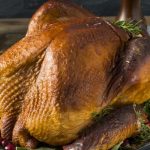Recognizing and Managing Food Cues for Weight Loss

Anyone who has ever gone on a diet or attempted to lose weight knows that there are more than a few difficulties along the way. Losing weight and keeping it off for good means making changes to the ways you approach food and nutrition that will last the rest of your life. One difficulty in this process is recognizing something called ‘Food Cues’. These are the factors that influence how, why, and when you eat.
What are Food Cues?
Also called food triggers, food cues are the external or internal urges that create the desire to eat. Sometimes they are your body’s natural trigger telling you it’s time to eat, while other times it’s a reaction to external stimulations, like smells, sights, or even sounds.
Food cues can trigger us into unhealthy habits. They are the culprit behind many people’s mindless snacking and can create lasting, unhealthy habits. Some of these responses have to do with something called classical conditioning. This is the idea that we experience a trigger and our brain expects food, such as the smell of baked goods or those famous golden arches. Ever heard of Pavlov’s dogs? Those dogs’ drool is the response of a food cue.
What are the Types of Food Cues?
There are four types of food cues:
- Visual: commercials, advertisements, logos, or other images and videos depicting food or people eating
- Auditory: fast-food jingles, bacon frying in a pan, the “ding” of an oven timer, etc.
- Olfactory: walking past a bakery, popcorn in the movie theater, or apple pie on a window sill
- Mental: boredom, stress, loneliness, etc.
It’s important to pay attention to these food cues. Just because you feel triggered by a sight, sound, smell, or feeling does not mean that you are actually hungry. Often, it’s just your body reacting to things it has recognized in the past. Thankfully, there are ways to reevaluate and overcome these food cues.
Managing Unwanted Food Cues
Follow these tips to prevent unnecessary snacking and overcome food cues:
Stick to a Schedule
Whenever possible, don’t’ rely on your body’s physical signs of hunger to urge you to eat, because these can be confused with food cues. Stick to a healthy nutritional plan and only eat when it is time for you to eat.
Try the Three W’s
The three W’s are Wait, Water, and Walk. If you experience a food trigger, set a tie for ten minutes. Some triggers will disappear if you do not immediately give in to the urge. After the then minutes, have a glass of water. Dehydration can feel similar to hunger, so drinking a glass of water can alleviate the temptation. Lastly, go for a short walk to clear your mind. Exercise is a great mood booster and distraction from food triggers.
Managing food cues is about becoming aware of their impact and influence. Often, external factors are the only reason your body is telling you to eat that pastry or open that bag of chips. Learning how to recognize and work around food cues is a powerful tool that will help you throughout the entirety of your weight loss journey.
Find more tips and weight loss support on the Tri State blog page.












